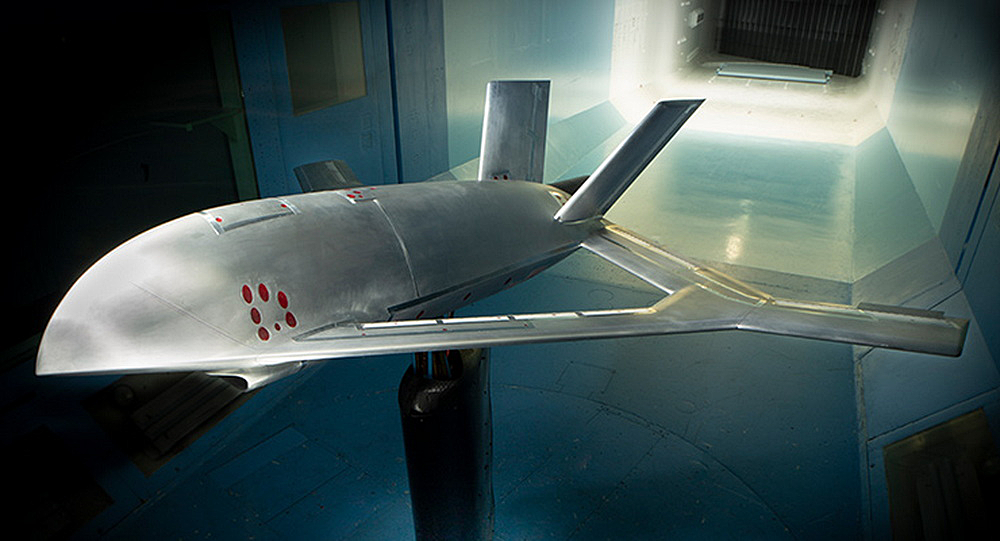Defensenews.com reported that the Defense Advanced Research Study Projects Firm (DARPA) has actually taken a significant advance towards developing a speculative plane that can be steered without standard ailerons or other mechanical gadgets, rather utilizing brief bursts of air. DARPA has actually tapped Aurora Flight Sciences, a Boeing subsidiary, to begin in-depth style of a speculative airplane that utilizes air bursts to steer.
DARPA picked Aurora Flight Sciences to begin in-depth style of an airplane that utilizes an innovation called active circulation control to direct it, as part of the Control of Revolutionary Airplane with Unique Effectors, or CRANE, program. Aurora is a subsidiary of Boeing headquartered in Manassas, Virginia, that focuses on establishing sophisticated ingenious styles for airplane and uncrewed systems.
” Over the previous numerous years, the active circulation control neighborhood has actually made considerable improvements that make it possible for the combination of active circulation control innovations into sophisticated airplane,” CRANE program supervisor Richard Wlezien stated in a declaration. “We are positive about finishing the style and flight test of a presentation airplane with AFC as the main style factor to consider. With a modular wing area and modular AFC effectors, the CRANE X-plane has the prospective to reside on as a nationwide test possession long after the CRANE program has actually concluded.” DARPA hopes the active circulation control idea, if effective, might trigger a significant reassessing of how aircrafts are constructed and maneuver.
Active circulation control innovation would utilize little bursts of air from a wing or other air foil surface area to move the airplane’s position or instructions. The burst itself is not pressing the wings under this idea, he stated, the method a spacecraft utilizes thrusters to push it into position in orbit or throughout re-entry. Rather, an active circulation control burst produces something of a speedbump that modifies the method air streams over the wings, which then triggers the airplane to move.
” It’s really energy-efficient,” Walan stated. “Since I’m utilizing the natural method the air wishes to move, I’m injecting simply a bit of energy into it to get a huge result out of it. We’re not really pressing the lorry with air, we’re utilizing it to customize how the air is streaming over the wing.”
The aerospace neighborhood has actually considered this idea for a minimum of 3 years, he stated, and attempted lab experiments and some small flight presentations. In 2015, NASA and Boeing collaborated to effectively fly a 757 airplane customized with a vertical tail that utilized active circulation control innovation for increased aerodynamic effectiveness. Up until now, Walan stated, nobody has actually attempted to manage a whole plane utilizing this innovation. If DARPA chooses to progress into the next stage, Aurora would develop a complete scale demonstrator with a 30-foot wingspan, and would intend to carry out flight tests in 2025.
Over the last few years, he stated, DARPA felt the innovation– consisting of supercomputers and sophisticated fluid characteristics tools, and drone airplane that might make showing active circulation control more affordable and much safer than checking it on manned aircrafts– had actually established to a point where “the time was ideal to attempt to see if we might create an aircraft around this.”
DARPA likewise needed to reveal this innovation isn’t simply something that “noises cool,” he stated, however might yield concrete advantages over the standard system.
In its Tuesday declaration, DARPA stated this innovation might enhance how airplane fly in numerous methods, consisting of by getting rid of moving surface areas to manage the aircraft, minimizing drag, thicker wings for structural effectiveness and increased fuel capability, and streamlined systems to enhance an airplane’s lift. Walan stated in 2021 that it might likewise result in decrease expenses and increased airplane dexterity. Aurora has actually now finished the job’s Stage 1, an initial style stage that yielded what DARPA referred to as “an ingenious testbed airplane” that effectively utilized active circulation control in a wind tunnel test.
Aurora will now move into Stage 2 under the $42 million agreement, where it will develop a comprehensive engineering style for its aircraft and establish flight software application and controls. This will end with a crucial style evaluation of an “X-plane” demonstrator that will fly without standard flight control surface areas on its wings or tail. If the idea does work, Walan stated, it might be a “disruptive” innovation– and even overthrow how future airplane are created. See a video here See Defensenews.com for information
